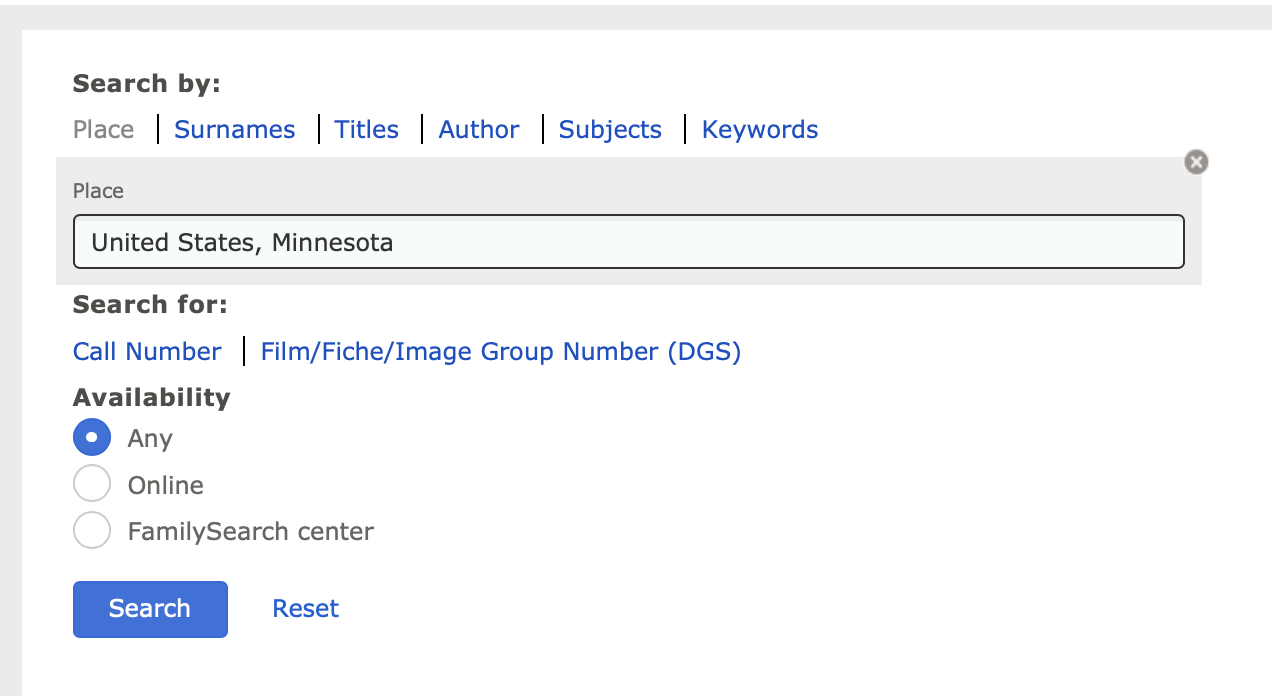BY SUSAN WEINBERG
When I first began genealogy research, I went out every year to the Family History Library in Salt Lake City, Utah. At that time, records were not digitized, and research meant cranking through microfilm. Today, technology has changed the way we access digitized records from our home computers, as they are now often indexed by name. Even now, those skills from that early microfilm environment are still quite useful, particularly in finding unindexed records which include over 70% of the Family History Library records.
WHAT IS FAMILYSEARCH?
In January of this year, The Church of Jesus Christ of Latter-day Saints (the Church), the library’s funder, renamed the Family History Library the FamilySearch Library (FSL). FamilySearch.org is the library’s affiliated website. Genealogy research is interwoven with the Church’s beliefs, but as a nonprofit organization, they make their resources freely available to the public. FamilySearch is useful for both US and overseas records as they have been copying records from archives around the world for many years. In 1998, the Church made a significant commitment to digitize their records, many of which can now be accessed online from home or by computer at one of their network libraries.
ACCESSING DIGITAL RECORDS
While FamilySearch is a free platform, access requires an account at FamilySearch.org.

Click on Search to access a dropdown titled Records, which includes information that is indexed by an individual’s name. Enter the name you are researching and any other identifying information. Search broadly, then add more criteria to narrow the dataset. You may find a variety of records with the attached document or an extraction of the information. Camera or document icons indicate available records. In each case, someone has gone through the file, extracting names so you can search on them.
Also under Search, you will see a dropdown titled Catalog. When I used to go out to the FSL, the catalog was the only option. The indexed records were not yet available and for many of the records, they still are not. Within the Catalog, you can find both indexed and unindexed records. ”Unindexed” doesn’t mean they don’t have an index. There may be an index in the record set or a separate file with an index, just not necessarily built into the search functionality.
I generally start by searching a place. When you input Minnesota, it will take you to a page with a wide variety of records. The records I seek most frequently on FamilySearch are the naturalization records and vital records which provide key information.
ICONS OF NOTE
There are several icons with which you will need to be familiar.
You may see a magnifying glass and a camera. That means the names have been indexed and the document is searchable by name. Sometimes you will see only the camera image and no index built into the document. Even if unindexed, you may locate a document number in another source such as Ancestry that might assist you. Sometimes records are in date order so you may be able to use that information to locate the record.
There are a couple of other icons that you will need to know.
![]()
If you see an icon that looks like a reel, it means the resource is only available on microfilm at the main library in Utah.
You may also see a camera with a key over it. That signifies that there is an image, but it can only be accessed at a FamilySearch library. To access it, you will need to go to a FamilySearch library, located in the organization’s churches or libraries around the world. During the COVID pandemic, sometimes even records with a key over them provided on-line access, so be sure to check first if this icon comes up. According to the FSL location map, the nearest FamilySearch Center is in Crystal, Minnesota. There are also FamilySearch affiliate libraries which provide privileges to limited-access databases. Hennepin County Central Library and University of Minnesota Wilson Library are FamilySearch affiliate sites.
For helpful tips from Susan Weinberg about researching Vital Records click here.
SUSAN WEINBERG is a writer, artist, and genealogist, and frequently speaks on topics related to genealogy and artwork. She is president of the Minnesota Jewish Genealogical Society (MNJGS.org) and serves on the boards of the International Association of Jewish Genealogical Societies (IAJGS.org) and the Jewish Historical Society of the Upper Midwest (JHSUM.org). She creates art in her studio in the California Building in Northeast Minneapolis. For more information, visit studio409art.com or her book site, wespokejewish.com.


